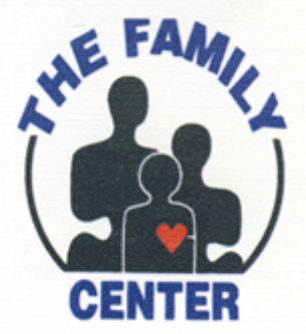

Services



Play Therapy
Why Play?
In recent years a growing number of noted psychologists and psychiatrists have observed that play is as important to human happiness and well-being as love and work. Some of the greatest thinkers of all time, including Aristotle and Plato, have reflected on why play is so fundamental in our lives. The following are some of the many benefits of play that have been described by Play Therapists. Play is a fun, enjoyable activity that elevates our spirits and brightens our outlook on life. It expands self-expression, self-knowledge and self-actualization. Play relieves feelings of stress and boredom, connects us to people in a positive way, stimulates creative thinking and exploration, regulates our emotions, and boosts our ego. In addition, play allows us to practice—in a safe environment—skills and roles needed for survival. Learning and development are best fostered through play.
Why Play in Therapy?
Therapists use the curative powers inherent in play in many ways. They may employ the language of play to help children express what is troubling them when they cannot say their thoughts and feelings in words. Through play, therapists may teach children more adaptive behaviors when there are emotional or social skills deficits. The positive relationship that develops between therapist and child during play sessions may provide a corrective emotional experience or serve to release the natural healing resources that lie within the child. Play may also be used to promote cognitive development and provide insight about inner conflicts or dysfunctional thinking in the child.
What is Play Therapy?
Play Therapy refers to a large number of treatment methods, all of which make use of one or more of the natural benefits of play. All Play Therapy differs from regular play in that the therapist helps children systematically address and resolve their own problems. Since play is fun, it makes it easier for children to confront what is bothering them. Play allows them a safe psychological distance from their problems and allows them to express their true thoughts and feelings in ways best suited to their development level. Once children have expressed and addressed their problems through play, the therapist will be better able to help them find solutions to their problems in life.
Who benefits from Play Therapy?
While play is a natural process for children, play and Play Therapy can be helpful to people of all ages with a variety of presenting concerns.
How does Play Therapy work?
Children are brought into Play Therapy to safely address and resolve their problems. Often, by the time children arrive for therapy, they have used up all of their own options for solving their problems and simply do not know what else to do. By this time, children may be acting out at home, with friends and at school. Play Therapy allows trained play therapists to assess and understand children's play and to use it in assisting the child in coping with difficult emotions and in finding solutions to their problems. By safely confronting their problems in the protected Play Therapy environment, children find creative solutions. Play Therapy allows children to change the way they think about, feel toward and resolve their problems. Even the most troubling problems can be confronted in Play Therapy and lasting resolutions can be discovered, rehearsed and adapted into the child's life.
How will Play Therapy benefit my child?
Children benefit from Play Therapy in many ways. Research supports the effectiveness of Play Therapy with children experiencing a wide variety of social, emotional, behavioral and learning problems, including post-traumatic stress, conduct disorder, aggression, anxiety/fearfulness, depression, ADHD, impulsivity, low self-concept, reading difficulties, and social withdrawal. Play Therapy has been used successfully with children whose problems are related to life stressors, such as divorce, death, relocation, hospitalization, chronic illness, physical/sexual abuse, domestic violence, and natural disasters. Play Therapy can help children and others to:
|
Research suggests that it takes an average of twenty Play Therapy visits to resolve the problems of the typical child coming to treatment. Of course, some children may improve much faster while more serious or ongoing problems may take longer to resolve.
How can my family be involved?
Families play an important role in children's healing processes. The interaction between children's problems and their families is always complex. Sometimes children develop problems as a way of signaling that there is something wrong in the family. Other times the entire family becomes distressed because the child's problems are so disruptive. In all cases, children and families heal faster when they work together. The play therapist will make some decisions about how and when to involve some or all members of the family in the Play Therapy. At a minimum, the therapist will want to communicate regularly with the child's caretakers to develop a plan to resolve problems as they are identified and to monitor the progress of the treatment. Other options might include involving a) the parents or caretakers directly in the treatment in what is called Filial Play Therapy and, b) the whole family in Family Play Therapy. Whatever the involvement, family members can be an important part of the child’s healing.
Who practices Play Therapy?
The practice of Play Therapy requires specialized training and experience. A play therapist is first a trained mental health professional with at least a master's degree in psychology, social work counseling or a related field. Where it is available, play therapists should also hold a license consistent with their mental health degree. With advanced, specialized training, experience and supervision, mental health professionals may also become Registered Play Therapists (RPT) or Registered Play Therapist-Supervisors (RPT-S).
EMDR
How Was EMDR Developed?
In 1987, psychologist Dr. Francine Shapiro made the chance observation that eye movements can reduce the intensity of disturbing thoughts. Under certain conditions, Dr. Shapiro studied this effect scientifically, and in a 1989 issue of the Journal of Traumatic Stress, she reported success using EMDR to treat victims of trauma. Since then, EMDR has developed and evolved through the contributions of therapists and researchers all over the world. Today, EMDR is a set of standardized protocols that incorporates elements from many different treatment approaches.
How Does EMDR Work?
No one knows how any form of psychotherapy works nerobiologically or in the brain. However, we do know that when a person is very upset, their brain cannot process information as it does ordinarily. One moment becomes "frozen in time," and remembering a trauma may feel as bad as going through it the first time because the images, sounds, smells and feelings haven't changed. Such memories have a lasting negative effect that interferes with the way a person sees the world and the way they relate to other people.
EMDR seems to have a direct effect on the way that the brain processes information. Normal information processing is resumed, so following a successful EMDR session a person no longer relives the images, sounds, and feelings when the event is brought to mind. You still remember what happened, but it is less upsetting. Many types of therapy have similar goals. However, EMDR appears to be similar to what occurs naturally during dreaming or REM (rapid eye movement) sleep. Therefore, EMDR can be thought of as a physiologically based therapy that helps a person see disturbing material in a new and less distressing way.
What Is The Actual EMDR Session Like?
During EMDR, the therapist works with the client to identify a specific problem as the focus of the treatment session. The client calls to mind the disturbing issue or event. What was seen, felt, heard, thought, etc., and what thoughts and beliefs are currently held about that event. The therapist facilitates the directional movement of the eyes or other dual attention stimulation of the brain, while the brain focuses on the disturbing material, and the client just notices whatever comes to mind without making any effort to control direction or content. Each person will process information uniquely based on personal experiences and values. Sets of eye movements are continued until the memory becomes less disturbing and is associated with positive thoughts and beliefs about one's self; for example, "I did the best I could." During EMDR, the client may experience intense emotions, but by the end of the session, most people report a great reduction in the level of disturbance.
How Long Does EMDR Take?
One or more sessions are required for the therapist to understand the nature of the problem and to decide whether EMDR is an appropriate treatment. The therapist will also discuss EMDR more fully and provide an opportunity to answer questions about the method. Once therapist and client have agreed that EMDR is appropriate for a specific problem, the actual EMDR therapy may begin. A typical EMDR session lasts from 60 to 90 minutes. The type of problem, life circumstances, and the amount of previous trauma will determine how many treatment sessions are necessary. EMDR may be used within a standard "talking" therapy, as an adjunctive therapy with a separate therapist, or as a treatment all by itself.
But Does EMDR Really Work?
Approximately 20 controlled studies have investigated the effects of EMDR. These studies have consistently found that EMDR effectively decreases/eliminates the symptoms of posttraumatic stress for the majority of clients. Clients often report improvement in other associated symptoms such as anxiety. The current treatment guidelines of the American Psychiatric Association and the International Society for Traumatic Stress Studies designate EMDR as an effective treatment for posttraumatic stress. EMDR was also found effective by the U.S. Department of Veterans Affairs and Department of Defense, the United Kingdom Department of Health, the Israeli National Council for Mental Health, and many other international health and governmental agencies. Research has also shown that EMDR can be an efficient and rapid treatment. For further references, a bibliography of research may be found through EMDR International Association's website.
What Kind Of Problems Can EMDR Treat?
Scientific research has established EMDR as effective for posttraumatic stress. However, clinicians also have reported success using EMDR in treatment of the following conditions:
|
|
Additional information about EMDR
This revolutionary therapy has been adapted and modified for children and has been used worldwide to help children through a variety of different problems and circumstances. There are hundreds of case reports and ongoing research on the positive effects of using EMDR with children. EMDR has also been used to treat children after large-scale traumatic events, such as the Oklahoma City bombing, Hurricane Andrew, the shootings in Jonesboro, Arkansas, and the tragedy of September 11th, with positive results.
While it is not clear how eye movements or other forms of Dual Attention Stimulation (DAS) in EMDR work (e.g., hand taps or tones), ongoing investigations continue. We do know that the DAS component is not hypnosis: it may be that eye movements work similarly to what occurs naturally during dreaming or REM (rapid eye movement) sleep, where certain information is processed. Additionally, it is possible that DAS produces a relaxation response or a distraction that helps children relax rather than avoid facing disturbing events. Others think that the DAS may help bring all parts of the brain/mind together, and therefore, allow for access to the body's natural healing mechanisms.
Where Can I Learn More?
|
|
|
|
|
